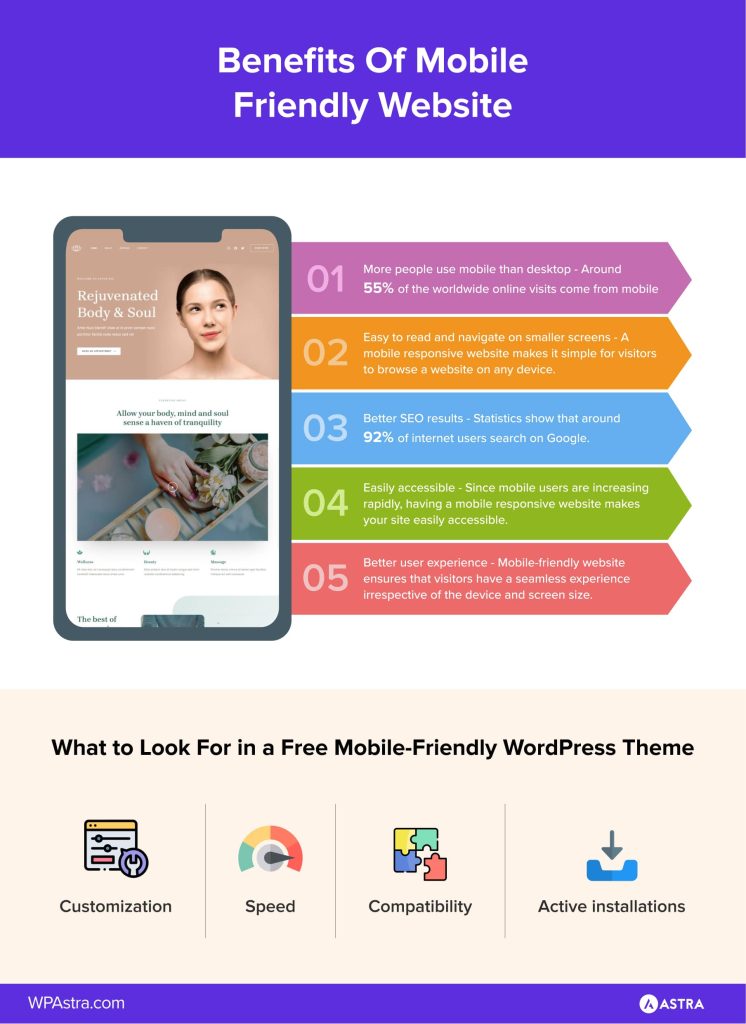
The Ultimate Overview to Mobile Optimization: Techniques for Enhancing Site Efficiency on Smartphones and Tablets
The strategies for improving internet site performance on mobile platforms go past mere adaptation; they include an extensive method that includes receptive style, speed optimization, content methods, and user experience improvements. By delving into the ins and outs of mobile optimization, services can not only fulfill individual expectations but additionally remain ahead in a competitive electronic landscape.
Significance of Mobile Optimization
Mobile optimization plays a pivotal duty in improving customer experience and driving conversion prices in the ever-evolving digital landscape. With the increasing usage of smart devices and tablet computers for searching the internet, ensuring that web sites are maximized for smart phones has become necessary for businesses - Mobile Optimization. A mobile-optimized web site not just adapts flawlessly to different screen sizes yet additionally lots promptly, providing users with a smooth and satisfying searching experience
In today's busy world, individuals anticipate immediate access to details on the go. A web site that is not maximized for mobile tools risks losing possible customers due to slow filling times or a poor user interface. By buying mobile optimization, businesses can cater to the demands of their mobile target market, causing higher interaction and raised conversions.
Moreover, online search engine like Google prioritize mobile-friendly internet sites in their positions, making mobile optimization vital for boosting presence and attracting organic web traffic. Mobile Optimization. Generally, the relevance of mobile optimization can not be overemphasized, as it directly impacts individual fulfillment, conversion prices, and overall organization success in the digital realm
Responsive Style Techniques
Applying responsive design techniques makes sure that web sites dynamically readjust their design and material based upon the user's gadget display dimension, offering a constant customer experience across various systems. Among one of the most typical methods made use of in receptive design is developing fluid grids that permit web content to resize proportionally to the display size. This ensures that components on the page maintain their family member spacing and setup, enhancing the viewing experience for users on various gadgets.
In addition, making use of adaptable photos that can scale with the dimension of the viewport aids stop photos from being chopped or misshaped on smaller displays. CSS media questions play a vital function in responsive style by permitting programmers to apply certain designs based upon the gadget qualities such as screen width, elevation, and orientation. By leveraging media questions, websites can adapt their format and design to fit mobile phones, tablet computers, and desktop screens effortlessly.
Including receptive style strategies not only boosts user experience yet likewise adds to boosted search engine rankings, as internet search engine like Google prioritize mobile-friendly internet sites in their mobile search results. By embracing responsive design, sites can accommodate the varied demands of users accessing content on a variety of devices, inevitably driving interaction and conversions.
Rate and Performance Optimization

One trick method is maximizing pictures and multimedia material to minimize data dimensions without endangering high quality. Pressing photos, leveraging modern photo layouts like WebP, and careless loading offscreen images work techniques to quicken load times (Mobile Optimization). Furthermore, reducing HTTP demands, leveraging internet browser caching, and reducing server action times are important steps in improving performance.
Executing a content shipment network (CDN) can additionally substantially improve site speed by distributing content throughout multiple servers around the world, decreasing latency for users Get More Info accessing the site from different locations. Focusing on vital above-the-fold material and delaying non-essential scripts can additionally boost perceived performance. By concentrating on speed and performance optimization, internet sites can supply a smooth and rewarding customer experience on mobile devices.
Mobile-Friendly Web Content Approaches
To enhance web content for mobile phones, it is vital to focus on readability and interaction through strategic format and concise messaging. Mobile-friendly material techniques involve tailoring the presentation of details to suit the smaller screens and on-the-go nature of smart device and tablet users. One essential element is to make certain that message is easily understandable without the demand for focusing, using font sizes that are clear on mobile displays. Furthermore, separating material into much shorter paragraphs and utilizing bullet factors can assist boost readability and make it less complicated for individuals to take in information swiftly.
Incorporating interesting visuals, such as photos and videos maximized for mobile watching, can likewise enhance the general customer experience. These visuals need to matter, high-quality, and load quickly to stop individuals from wearying. Additionally, integrating interactive components like quizzes, polls, or studies can increase individual engagement and motivate active participation.
User Experience Enhancements
Structure on the structure of mobile-friendly material methods, enhancing user experience requires optimizing every touchpoint to make sure smooth communication and satisfaction for mobile individuals. One crucial element of enhancing individual experience on mobile devices is ensuring quickly packing times.
In enhancement to speed up and responsive style, simplifying navigation is necessary for a favorable customer experience. Clear and instinctive navigating food read this article selections, popular search bars, and tactically positioned call-to-action buttons can help users easily find what they are seeking on a mobile site. Maximizing types for mobile customers by minimizing the variety of fields and using auto-fill features can likewise boost the total user experience. By concentrating on these user experience improvements, web sites can effectively engage and preserve mobile site visitors.
Conclusion
Finally, mobile optimization is important for improving web site efficiency on mobile phones and tablets. find more info By executing responsive style strategies, maximizing speed and efficiency, producing mobile-friendly web content, and boosting individual experience, businesses can effectively reach and involve with their mobile target market. It is necessary for web sites to adjust to the increasing mobile use fads in order to remain affordable in the digital landscape.